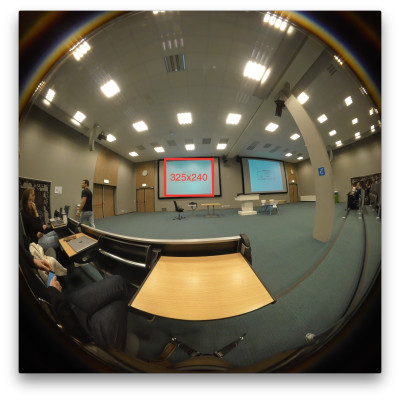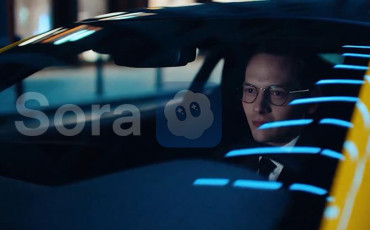After six painstaking weeks of going back and forth with KODAK support I finally got the support I needed. Of course not after getting annoyed as … for the technical support team not understanding what the problem was. But in the end KODAK came through, with a shiny new mac version of the PIXPRO SP360 4k software, version 2.2.1.0 (not available on their website).
So now I am finally able to export VR video to Youtube and watch the glorious 4K full resolution footage with google cardboard and also the HOMIDO goggles. But the results fell short. As can be seen in the VR video in my previous post, viewing the footage in full resolution on a PC in full screen mode still renders the presentation on the beamer too blurry. So what’s going on?
Turns out, 4K is not enough. Ok I admit the lighting in the lecture hall is bad, but we are seriously under pixeled. The SP360 is recording at a stunning 2880 x 2880 resolution but the amount of pixels available for recording the beamer projection only adds up to around 325 x 240 pixels as can be seen in the raw image below.

Though these tiny white rectangles are actually ginormous screens, the distance from the first row is such that the actual viewing image is very limited. Mental note, don’t buy a ultra large TV, just sit closer. That advice should also be taken into account for recording lectures in VR. The only thing is that putting on the goggles does work very effectively in experiencing the lecture as a first person, meaning having the table top down and having students sit beside you really gives you the feeling that you are there. Putting the camera closer would immediately abolish this effect, let alone annoy the lecturer immensely for standing in the way.
So what to do now? We need to find the optimal screen size to viewing distance ratio for best recording. Oh and we also haven’t gotten around to stitching all the fragments together. But we’ll leave that for the next blog.



0 Praat mee